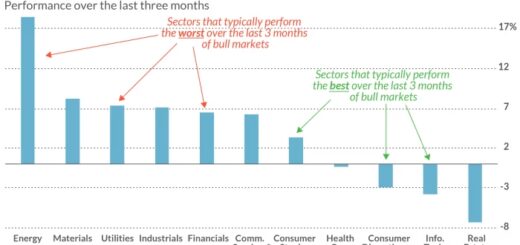Years of Subpar Stock Market Returns Ahead, Warns Fed Economist: Two Key Tailwinds Fade 💨📉
US stock investors may need to prepare for potential disappointments, as recent warnings from a Federal Reserve researcher suggest.
Corporate tax reductions and interest-rate cuts have been driving stock returns for a prolonged period, according to Federal Reserve economist Michael Smolyansky.
Smolyansky foresees a rather challenging future for stocks, characterized by slowing earnings growth and dissipating tailwinds.
US stock investors have enjoyed strong tailwinds for years, but their fortunes may soon change, according to a Federal Reserve researcher.
Smolyansky recently published a research paper titled “End of an Era: The Coming Long-run Slowdown in Corporate Profit Growth and Stock Returns.” In the paper, he concludes that the S&P 500’s real return of 5.5% (excluding dividends) from 1989 to 2019 was mainly due to declines in interest rates and corporate tax, a trend unlikely to continue in future years.
Stock prices generally rise when corporate profits grow, or P/E multiples expand. Smolyansky’s research found that more than 40% of the real corporate profit growth between 1989 and 2019 can be attributed to reductions in corporate tax and interest rates.
Additionally, the lowered interest rates led to decreased risk-free rates (the guaranteed return from assets such as US Treasuries), accounting for the P/E multiples expansion during this period.
Smolyansky states, “Investors, therefore, got lucky. I argue that this streak of good luck is likely over.”
Even before the 2020 COVID-19 pandemic, interest rates were historically low, leaving little room for further reductions, particularly given the reemerging inflation risks.
Simultaneously, the effective corporate tax rate for S&P 500 non-financial firms declined from 34% in 1989 to 15% by 2019. Further cuts seem unlikely given the current near-record levels of the US debt-to-GDP ratio and the Biden administration’s implementation of a 15% minimum tax rate last year.
Smolyansky contends that if corporate tax and interest rates remain around their 2019 lows in the future, corporate profits will grow only at the same pace as EBIT. He cites a lag in EBIT growth compared to US GDP growth between 1962 and 2019, suggesting that it is unlikely to exceed a growth rate of 2% annually in the long term. Limitless expansion of P/E multiples also appears improbable.
“This scenario carries serious implications for stock returns,” says the economist. “If actual earnings growth fails to surpass 2% per annum in the long run, then the stock prospects are grim.”
“Expect future stock returns and corporate profit growth to be significantly lower,” he warns, describing the continuous boost to earnings growth from tax reductions and interest rate cuts as “a trend that has now reached its limit.”
Smolyansky cautions that his pessimistic outlook could be seen as conservative. If the stock market hasn’t already priced in slower earnings growth, P/E multiples could rapidly contract once it does. Moreover, the reduction in interest and corporate tax rates may have artificially stimulated EBIT growth in recent decades, paving the way for an even greater slowdown than anticipated.
“The risks associated with this forecast, if anything, lean towards the downside,” he concludes.




